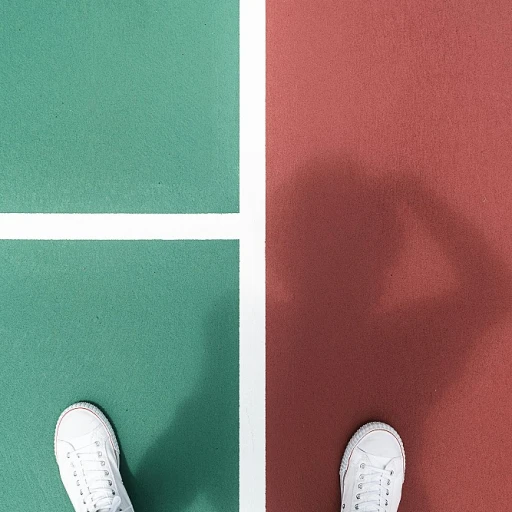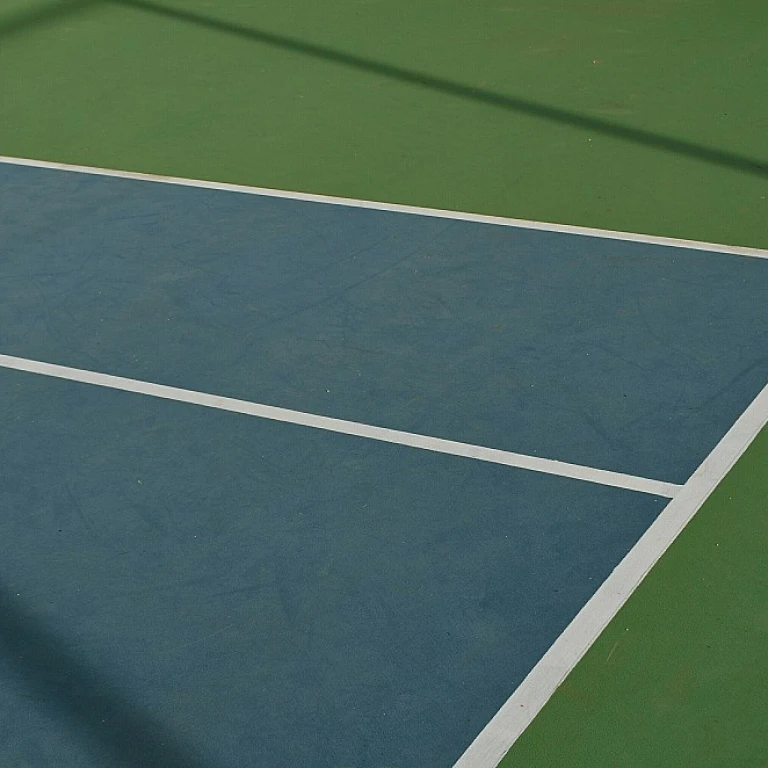Understanding the Role of Pickleball Court Builders
The Expertise Behind Constructing Pickleball Playing Areas
Understanding the vital role of construction professionals in the development of pickleball courts is crucial for anyone interested in this sport's infrastructure. At the intersection of design, material selection, and installation techniques, these experts ensure that each pickleball court is crafted to meet specific needs and standards. The work of these builders is a finely tuned balance between creativity and functionality, aimed at delivering surfaces that enhance the playing experience.
Pickleball courts are not just scaled-down tennis courts. Their construction requires specialized knowledge of post-tension technology and the intricacies of different surface materials like acrylic, asphalt, and concrete. Concrete is a popular choice due to its durability and stability, offering a solid foundation that can withstand the demands of outdoor pickleball courts.
Choosing the right materials is only part of the equation. The design and color selection also play a pivotal role, impacting both the performance and aesthetic appeal of the court. Whether placed in a backyard or a community park, each court can be tailored to its specific environment, ensuring that it not only functions well but also complements its surroundings.
For those considering the construction of a pickleball court, consulting with knowledgeable court builders is essential. These professionals can guide the entire process from initial design to final installation, making the dream of a personal or public pickleball court a tangible reality. Additionally, understanding the expenses involved and factors affecting costs is equally important for planning purposes. Explore the
expense elements associated with building a pickleball court to make informed decisions about your pickleball investment.
Materials and Techniques in Pickleball Court Construction
Diverse Materials for Optimal Court Surfaces
When it comes to constructing high-quality pickleball courts, selecting the right materials is paramount. The choice of materials not only affects the durability but also directly impacts the playing conditions. For instance, many builders utilize a combination of asphalt and concrete for the court base, which offers a durable foundation.
Manufacturers typically prefer acrylic surfaces due to their versatility and favorable playing characteristics. This application involves a multi-layer system, contributing to both the resilience and the aesthetic appeal of the court. Acrylic surfaces are often praised in sports construction for providing a competitive playing surface—striking a balance between grip and speed.
Post Tension Construction Techniques
Post tension concrete is another method often employed in modern pickleball court construction. This technique involves reinforcing the concrete with steel tendons held under tension. This approach not only enhances the structural integrity but also minimizes cracking—a common challenge in court construction. Such methods ensure that the pickleball court stands up to weather elements and heavy play, making them a popular choice among court builders.
Natural and Synthetic Choices
Court builders sometimes explore natural and synthetic sports surfaces when the design calls for specific requirements. These options can provide varied playing experiences and are often chosen for both indoor and outdoor pickleball installations. Builders often consider environmental factors, such as local climate and intended use, when selecting materials and techniques.
Importance of Resurfacing
Regular maintenance and resurfacing are crucial for the longevity of a pickleball court. Ensuring a smooth and level surface can enhance the playing experience. Acrylic surfacing systems are preferred during resurfacing to maintain the original quality and color of the court.
For a deeper understanding of cost considerations when constructing a pickleball court, an excellent resource is the blog post on understanding the cost of building a pickleball court
here. This guide is invaluable when weighing the financial aspects of court surfacing and installation, as it explores various pricing factors.
Challenges Faced by Pickleball Court Builders
Overcoming Construction Challenges in Pickleball Courts
Building a pickleball court requires a detailed understanding of various challenges that may arise during construction. The process often involves dealing with complex issues related to site preparation, material selection, and customization to meet specific player or community needs.
A common hurdle for court builders is the preparation and stabilization of the playing surface. Whether it’s asphalt or concrete, ensuring a level and durable foundation is crucial. Often, site-specific conditions like soil quality or regional climate impact the choice of materials and techniques used. For example, in regions susceptible to extreme weather, post-tension concrete may be preferred due to its resilience and ability to minimize cracking.
Court resurfacing, especially in renovating existing tennis courts for pickleball use, introduces another layer of complexity. This requires not just technical know-how but also an aesthetic approach to blend the newly added pickleball markings with existing surfacing. The choice of quality acrylic surfacing ensures a smooth finish and optimal color blend, enhancing game playability and visual appeal.
When it comes to indoor and outdoor courts, the construction also needs to factor in the intended use. Outdoor pickleball courts face challenges such as water drainage and exposure to UV rays, making proper surfacing solutions essential for longevity.
Navigating these challenges demands the expertise of seasoned court builders who are well-versed in sports construction. They must ensure that each pickleball court, whether it’s in a community park, a private backyard, or part of a larger sports complex, meets the quality and safety standards desired by today’s players.
For those looking to improve their pickleball game, ensuring the quality of your court is just as critical as training. Explore ways to enhance your game with
effective pickleball training aids to complement your state-of-the-art court.
Innovative Designs in Pickleball Court Construction
Exploring Innovative Approaches in Court Construction
The allure of pickleball, both as a sport and a community activity, has led to innovative designs in pickleball court construction. These designs focus on enhancing the player experience and optimizing the functionality of courts.
One key innovation is the application of post-tension concrete in court surfaces. This technique minimizes cracking, a common issue in outdoor pickleball and tennis courts, ensuring a more durable and seamless playing surface. The smoothness of the court surface significantly affects the ball bounce and overall gameplay quality.
The choice of materials also plays a crucial role. Acrylic surfaces, often used in the surfacing of tennis courts, are prized for their vibrant color options and ability to withstand various weather conditions. These materials elevate the aesthetic appeal of courts while providing a high-quality playing surface.
Innovative designs also include modular sport court tiles, which allow for quick installation and surfacing with minimal maintenance. This option is particularly attractive for parks and community centers looking to introduce indoor and outdoor pickleball options without the lengthy process associated with traditional court installation.
Court builders are also exploring new techniques in court resurfacing, aimed at prolonging the lifespan and maintaining the quality of existing courts. For instance, utilizing asphalt concrete resurfacing can breathe new life into worn-out courts, making them playable and visually appealing once again.
Backyard pickleball courts have sparked interest in customizable designs. Homeowners can now choose specific color schemes, incorporating the sport's signature bold and bright hues into their personal courts. This personal touch is driving engagement and interest among new players who enjoy sports at home.
Whether building new or rejuvenating old courts, innovative designs in construction underscore the importance of leveraging cutting-edge materials and techniques. These advancements ensure that pickleball courts remain a top choice for both enthusiasts and new players alike, reinforcing the sport’s growing popularity across varied settings.
Cost Considerations for Building a Pickleball Court
Factors Influencing the Cost of Pickleball Court Construction
When it comes to constructing pickleball courts, understanding the financial implications is crucial for successful planning. Let's delve into the cost considerations that court builders must navigate to deliver quality sports facilities.
- Material Selection: The choice of materials like asphalt, concrete, and acrylic surfacing directly impacts the overall expenses. Concrete surfaces tend to be more durable while asphalt might offer a cost-effective solution. Each has its distinct advantages such as longevity and maintenance requirements.
- Surface Finish, Colors, and Design: Opting for specific surface finishes and colors can drive up the costs. Custom designs and multi-color options might require additional resources and expertise during installation.
- Site Preparation and Installation: The preparation of a site, including leveling and grading, can add to the costs. Post tension and specialized preparation may be necessary to ensure a high-quality playing surface.
- Indoor vs. Outdoor Construction: Building indoor pickleball courts usually involves higher costs due to additional infrastructure needs such as roofing and climate control. Outdoor pickleball courts can be less expensive but still require weather-resistant materials.
- Location and Accessibility: Constructing courts in urban areas or remote locations can affect transportation and labor costs. Accessibility for both materials and workforce is a factor to consider during the budgeting phase.
- Maintenance and Court Resurfacing: Long-term considerations like maintenance and potential resurfacing are essential for budget planning. Selecting surfaces that require minimal upkeep can reduce future expenses.
Engaging with experienced court builders can provide valuable insights into which options best suit your specific requirements while optimizing cost efficiency.
Understanding these cost variables ensures that investments into sports construction, whether a backyard pickleball court or public sports park facilities, are both practical and financially astute.
Choosing the Right Pickleball Court Builder
Guidelines for Selecting a Reliable Pickleball Court Builder
Opting for the right professional to manage your pickleball court construction project involves more than just selecting someone with experience. It's essential to delve into a prospective builder's portfolio, highlighting previous works with concrete and acrylic surfaces, as well as designs that meet high-quality standards.
- Evaluate Expertise and Experience:
- Look for builders with a background in sports construction, particularly those who have successfully completed projects involving both indoor and outdoor pickleball courts.
- Familiarity with materials such as asphalt concrete or other specialized surfaces is a crucial indicator of their capability.
- Consider Design and Innovation:
- Ensure the builder has a track record of innovative court installations, employing modern techniques like post tension designs that enhance durability.
- Assess their ability to adapt and design versatile courts suitable for multiple sports, including tennis and basketball courts, when required.
- Check References and Testimonials:
- Previous client experiences provide valuable insights into the quality of work and customer satisfaction.
- Reviews often highlight the reliability of builders during resurfacing or renovations of existing courts.
- Analyze Cost Effectiveness:
- A clear understanding of what the total cost of building a pickleball court includes is essential. This encompasses installation, choice of court surface, and additional features tailored for backyard pickleball or public parks.
- Engage builders who provide transparent pricing models, preventing unexpected financial surprises down the road.
- Prioritize Reliability and Warranty:
- Check if the builder offers warranties on materials and installation work, covering potential surfacing or design issues.
- A reliable guarantee enhances trust and demonstrates the builder's commitment to long-term quality and service.
By following these guidelines, you can secure a builder who not only meets technical requirements but also shares your vision for an effective and aesthetically pleasing pickleball court.

